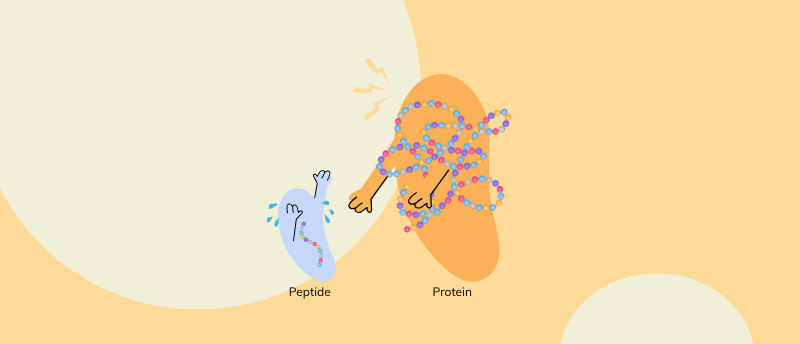A pivotal peril of profoundly pernickety peptides

In his latest column, Robert MacNeill (Bristol Myers Squibb; NJ, USA) touches upon the challenges of the pesky analyte that is the peptide.
 Robert MacNeill received his Bachelor’s degree with Honors in Chemistry from Heriot Watt University then his MSc in Analytical Chemistry from the University of Huddersfield, both in the United Kingdom. Robert is also a Chartered Chemist and a Fellow of the Royal Society of Chemistry. With almost 30 years of experience in all aspects of quantitative bioanalytical LC–MS/MS method development, a regular speaker, patent-holder and contributor to the scientific literature, Robert is a recognized expert and innovator in the field.
Robert MacNeill received his Bachelor’s degree with Honors in Chemistry from Heriot Watt University then his MSc in Analytical Chemistry from the University of Huddersfield, both in the United Kingdom. Robert is also a Chartered Chemist and a Fellow of the Royal Society of Chemistry. With almost 30 years of experience in all aspects of quantitative bioanalytical LC–MS/MS method development, a regular speaker, patent-holder and contributor to the scientific literature, Robert is a recognized expert and innovator in the field.
In his current role, after spending over two decades in bioanalytical contract research, Robert is a scientific director at Bristol Myers Squibb, within regulated bioanalysis. Here, he continues to give mentorship in LC–MS/MS method development and validation, works to foster innovation and enjoys technical and witty writing.
Many are the tales told, and the lament aired, of the “difficult peptide.”
There are occasions when bioanalytical challenges, like buses, all come along at once. And all are inextricably linked to the same single analyte entity, not even needing to introduce any element of multiple analytes, metabolites and mayhem. These challenges and, more specifically, the ways in which we address them, are prone to being embedded in the nuances of the method, as recently alluded to in this series of unsubtle literary interjections to our bioanalytical routines. Furthermore, the modality most particularly synonymous with this predicament is peptides, especially when superimposed on the wide range of physicochemical properties possible, unlike oligonucleotides that carry more of an element of predictability. For any biologic analyte though, there are common themes in this perspective, such as the chances of the issues at hand being all the more prevalent with increasing molecular weight.
Punctuating the backdrop here is my recent exposure to offhand mentions of the notion that it is often best to use a non-selective extraction to help avoid adsorptive effects, implying that the presence of matrix artifacts will help improve such an assay. Now, although there is a strong element of validity to this kind of statement, my opinion is that for our most robust methods, it is dangerous to live by a vagary like this, where more depth and detail is called for. I will elaborate a little as follows.
As mentioned in various ways in previous bletherings, along the dreaded lineup of miscreant phenomena, we have non-specific adsorptive effects, a terrible phenomenon with an array of possible means to exert deleterious effects on assay performance. Alongside, we have instability taking a sinister and inevitable place. We have the unspeakable prospect of interferences to quell, rubbing close shoulders with the other startling side effects of insufficient selectivity. We also have curvature, sometimes linked to internal standards with insufficient numbers of labeled positions, sometimes rooted in other effects, from mundane to fascinating. Not to mention sensitivity challenges through multiple charging and lack of volatility, frequently joined with heavy polarity making the ion evaporation process even more of a challenge, and where using multiple charge states in summation may or may not be of overall benefit. Additionally, we have needs for column and system passivation, and the somewhat related carrier effects that require understanding.
On this note, whilst we have options in our armory to address the above list, and any other monstrous method manifestations that I may have missed, one aspect I would like to seize on is the aforementioned carrier effect, linked to how we might approach non-specific adsorptive losses. The carrier effect ties into the introductory statement mentioned earlier, about the perceived wisdom of using a crude extraction like protein precipitation in a peptide LC–MS methodology. From experience, upon observing unquestionable differences when gently altering such conditions, this may be a situation where the nuance of nuances is at work. Something that when struck as the solution to a problem, can make an enormous difference to a method’s output both in terms of the performance data and, believe it or not, the short-term longevity of the chromatography. Designing a protein precipitation procedure to involve less precipitant to matrix, hence be less precipitous and contain more interferent abundance in the final sample, can preserve the chromatographic output. Accordingly, we have less chance of precipitating our minds out with the bounds of sanity.
To avoid being misunderstood, this is not a broad and ham-handed promotion of protein precipitation for producing rugged peptide methods. Rather, the carrier effect therein is something to be swiftly drilled into and characterized, then used to the benefit of the method in the sense of discrete and key additives to perform the carrier operation in an otherwise adequately clean extract. This kind of measure may often be needed even when the appropriate kind of low-bind material is employed for the extracts. The carrier may be protein content or it may be lipid content, perhaps both or even something else. Either way, we would be prompted to use a certain optimized modest concentration of an additive, such as a detergent known to interface well with mass spectrometric methods, like sodium dodecyl benzene sulfonate or Triton-X.
As such, this would be my preferred route to a crude, non-selective extraction means: a clean and often sample-concentrating solid-phase extraction incorporating a key additive in the final stages at the extract level. Most times, once non-specific adsorptive effects are addressed, we are well past the bulk of the work needed to achieve the final method objective.
Interested in reading more of Robert MacNeill’s columns? You can find his collection here.
Disclaimer: the opinions expressed are solely those of the author and do not express the views or opinions of their employers, Bioanalysis Zone or Taylor & Francis Group.
Our expert opinion collection provides you with in-depth articles written by authors from across the field of bioanalysis. Our expert opinions are perfect for those wanting a comprehensive, written review of a topic or looking for perspective pieces from our regular contributors.
See an article that catches your eye? Read any of our Expert Opinions for free.






